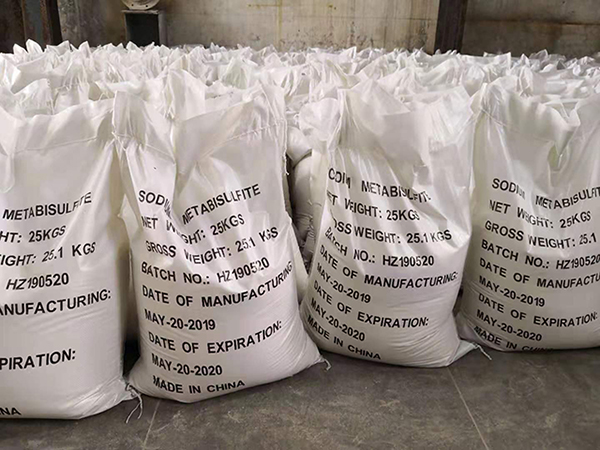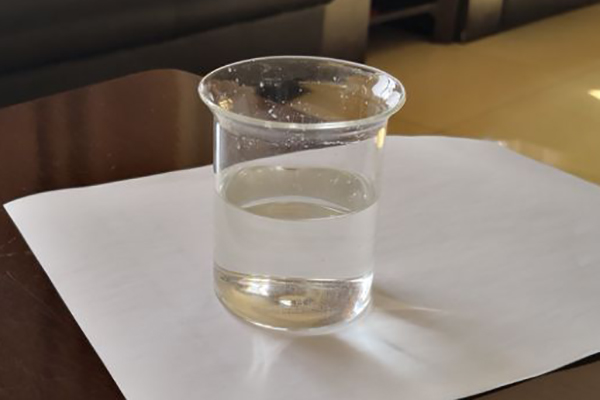What are the hazards of sodium metabisulfite and how to prevent it
Sodium metabisulfite is widely used, so do you know what are the hazards of sodium metabisulfite? What should we do if an accident occurs? Let us understand the harm and prevention measures of sodium metabisulfite.
Sodium metabisulfite is white or yellow crystalline powder or small crystal, with strong SO2 smell, specific gravity 1.4, soluble in water, aqueous solution is acidic, SO2 is released upon contact with strong acid to generate corresponding salts, and if left in the air for a long time, it will oxidize Into Na2S2O6, so the product cannot last for long. Above 1500C, SO2 is decomposed.
The main component of sodium metabisulfite is sulfur dioxide (SO2), which is used for bleaching. At the same time, it can cause damage to the liver and kidneys of the human body, and can cause acute poisoning in severe cases. Therefore, this additive is only allowed to be used within the specified content in some processed foods, so what other hazards does it have?

The hazards of sodium metabisulfite:
Health hazards: This product has a significant stimulating effect on the skin and mucous membranes, which can cause conjunctival and bronchitis symptoms. People with allergies or asthma are very sensitive. Direct skin contact can cause burns.
If sodium metabisulfite is excessively ingested, it will cause greater harm to the human body, it will affect the body's absorption of calcium, it will also destroy the B vitamins, cause diarrhea, and in serious cases, it will poison the liver and kidneys...
Explosion hazard: This product is non-flammable, toxic and irritating.
first-aid
Skin contact: Remove contaminated clothing immediately and rinse with plenty of running water for at least 15 minutes. See a doctor.
Eye contact: Lift the eyelid immediately and rinse thoroughly with plenty of running water or saline for at least 15 minutes. See a doctor.
Inhalation: leave the scene to fresh air. If breathing is difficult, give oxygen. See a doctor.
Ingestion: Gargle with water and drink milk or egg whites. See a doctor.
Fire-fighting measures
Hazardous characteristics: Strongly reducing. Contact with strong oxidants such as chromic anhydride, chlorate and potassium permanganate can cause a strong reaction, causing combustion or explosion.
Hazardous combustion products: sulfide.
Extinguishing method: Firefighters must wear full-body fireproof and anti-virus suits and extinguish the fire in the upwind. When extinguishing the fire, move the container from the fire site to an open place as much as possible.
Accidental release measures
Emergency treatment: Isolate the leaked contaminated area and restrict access. It is recommended that emergency personnel wear dust masks (full face masks) and anti-virus clothing. Avoid dust, sweep up carefully, transfer to a safe place in a bag. If there is a large amount of leakage, cover with plastic cloth or canvas. Collect and recycle or transport to waste disposal site for disposal.
Handling and storage
Notes on operation: Closed operation, strengthen ventilation. Operators must undergo special training and strictly abide by the operating regulations. It is recommended that operators wear self-priming filter dust masks, chemical safety protective glasses, anti-poison penetration work clothes, and rubber gloves. Avoid generating dust. Avoid contact with oxidants and acids. Handle lightly when handling to prevent damage to packaging and containers. Equipped with leakage emergency treatment equipment. Empty containers may be harmful residues.
Precautions for storage: Store in a cool, dry, well-ventilated warehouse. Keep away from fire and heat. Keep container tightly closed. It should be stored separately from oxidants, acids and edible chemicals, and avoid mixed storage. It should not be stored for a long time to avoid deterioration. The storage area should be equipped with suitable materials to contain the leakage.
Regulatory Information Regulations on the Safety Management of Chemical Dangerous Goods (promulgated by the State Council on February 17, 1987), Implementation Rules for the Regulations on the Safety Management of Chemical Dangerous Goods (Hualuofa [1992] No. 677), Regulations on the Safe Use of Chemicals in the Workplace ([1996] Ministry of Foreign Affairs No. 423) and other regulations have made corresponding regulations on the safe use, production, storage, transportation, loading and unloading of chemical dangerous goods.
Transportation precautions: The packaging should be complete at the time of shipment, and the loading should be secure. During transportation, make sure that the container does not leak, collapse, fall or damage. Mixed transportation with oxidants, acids, edible chemicals, etc. is strictly prohibited. It should be protected from exposure, rain and high temperature during transportation. The vehicle should be thoroughly cleaned after transportation.

